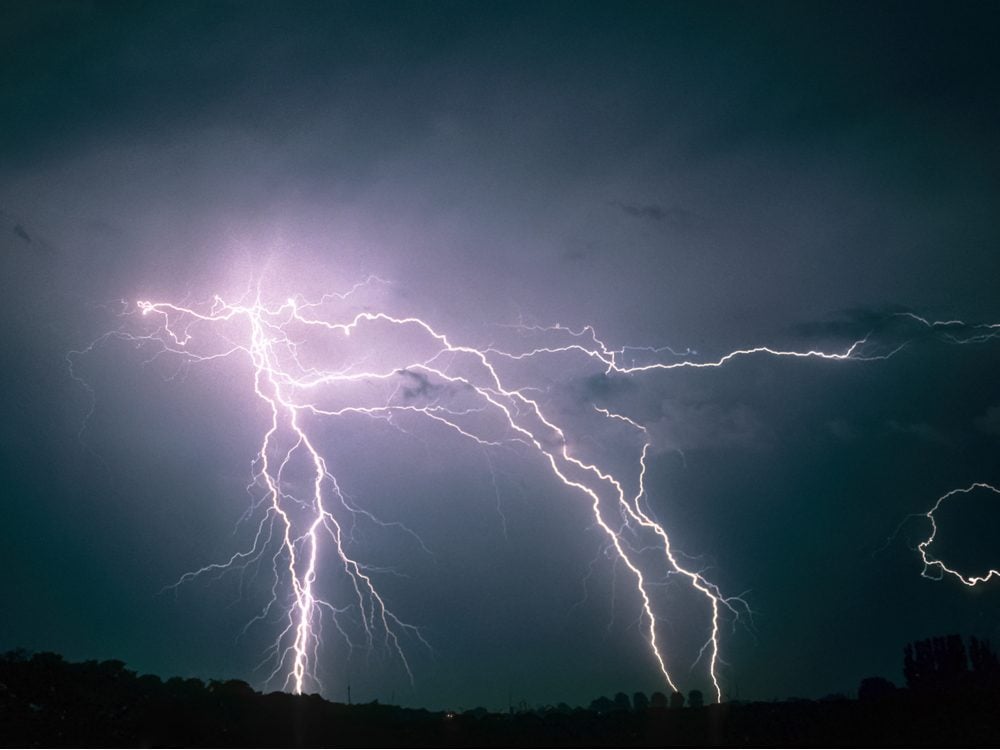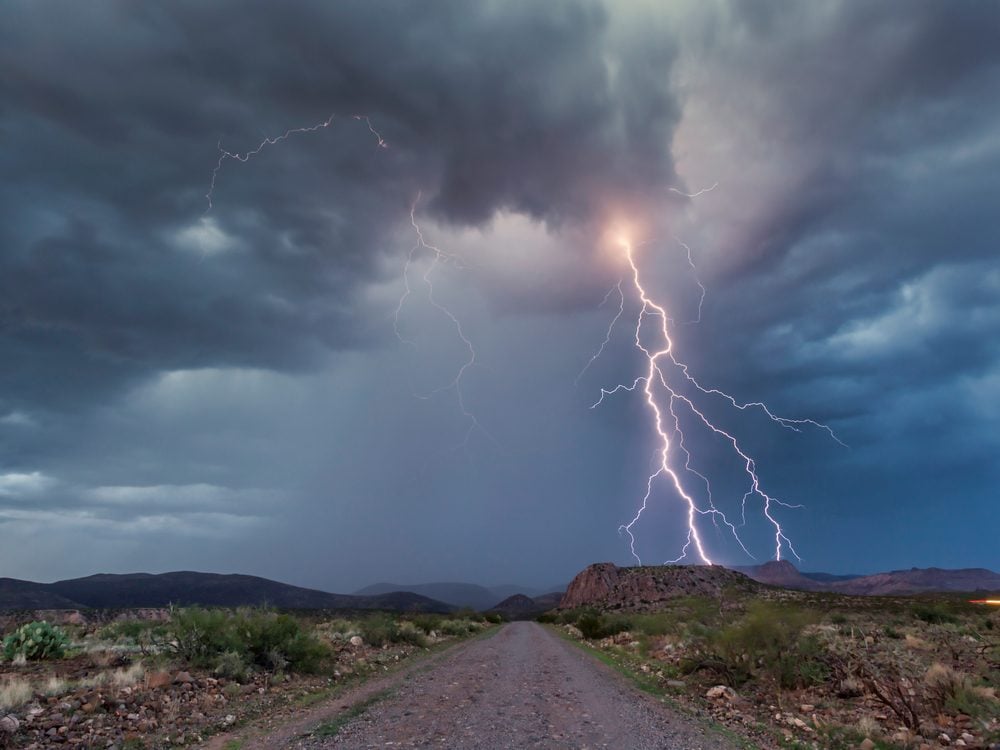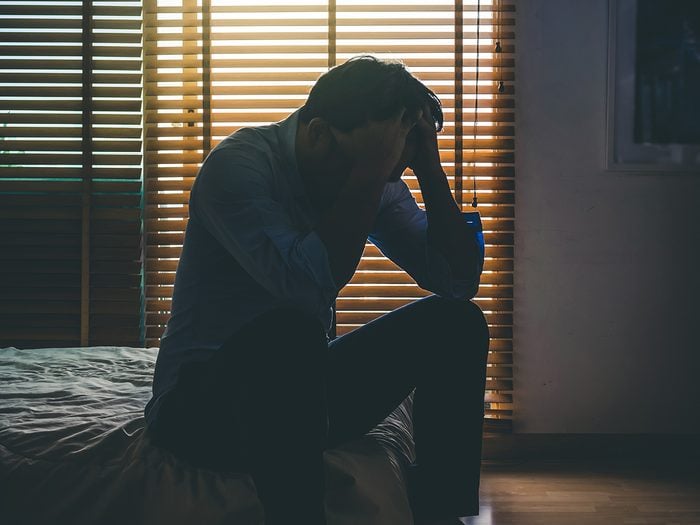How To Get Struck By Lightning
This Is What Happens When You Get Struck by Lightning
There's a nine in 10 chance you'll survive. But what are the lasting effects of being exposed to hundreds of millions of volts of electricity?
1 / 6
 Photo: Shutterstock
Photo: Shutterstock
"It looks like somebody threw a cannonball through it."
Sometimes they'll keep the clothing, the strips of shirt or trousers that weren't cut away by the doctors and nurses. They'll tell their story, sharing pictures and news reports of survivals like their own or bigger tragedies. Only by piecing together bystander reports can survivors of lightning strikes construct their own picture of the possible trajectory of the electrical current, one that can approach 200 million volts and travel at one-third of the speed of light.
In this way, Jaime Santana's family stitched together some of what happened one Saturday afternoon in April 2016, through his injuries, burnt clothing and, most of all, his shredded broad-brimmed straw hat. "It looks like somebody threw a cannonball through it," says Sydney Vail, a trauma surgeon in Phoenix, Arizona, who saw Jaime after he arrived by ambulance.
Jaime had been horse riding with his brother-in-law, Alejandro Torres, and two others in the mountains when dark clouds formed and began heading in their direction. So, the group started back, witnessing quite a bit of lightning as they neared Alejandro's house. But scarcely a drop of rain had fallen.
They had almost reached the house when it happened.
Alejandro doesn't think he was knocked out for long. When he regained consciousness, he was lying face down on the ground, sore all over. His horse was gone. The two other riders appeared shaken but unharmed.
Alejandro found Jaime on the other side of his fallen horse. The horse's legs felt hard, "like metal", he says. Flames were coming off Jaime's chest. Three times Alejandro beat out the flames with his hands. Three times they reignited.
Jaime had been struck by lightning.
ⓘ
2 / 6
 Photo: Shutterstock
Photo: Shutterstock
"My whole body just stopped—I couldn't move."
Justin Gauger wishes his memory of being struck by lightning while trout fishing in Arizona wasn't so vivid. An avid fisherman, Justin had been elated when the storm kicked up suddenly that August afternoon more than three years ago. Fish are more likely to bite when it's raining, he told his wife, Rachel.
But as the rain turned into hail, Rachel and their two children headed for the truck. When the pellets grew larger, Justin grabbed a nearby folding chair and raced for the truck.
Then came a crashing boom. A jolting, excruciating pain. "My whole body just stopped—I couldn't move," recalls Justin. "I saw a white light surrounding my body—it was like I was in a bubble. Everything was in slow motion."
A couple huddling under a nearby tree ran to Justin's assistance. They later told him that he was still clutching the chair. His body was smoking.
When Justin came to, his ears were ringing, and he was paralyzed from the waist down. "Once I figured out I couldn't move my legs, I started freaking out."
Describing that day, Justin draws one hand across his back, tracing the path of his burns, which at one point covered roughly a third of his body. They began near his right shoulder and extended diagonally across his torso, he says, and then continued along the outside of each leg.
He holds up his boots, tipping them to show several burn marks on the interior. Those deep, dark roundish spots line up with the singed areas on the socks he was wearing—and with the coin-sized burns he had on both feet.
The singed markings also align with several needle-sized holes located just above the thick rubber soles of his size 13 boots. Justin's best guess—based on reports from the nearby couple, along with the wound on his right shoulder—is that the lightning hit his upper body and then exited through his feet.
Find out why meteorologists get forecasts wrong—and more fascinating facts about the weather.
3 / 6
 Photo: Shutterstock
Photo: Shutterstock
The side effects of being struck by lightning
Although survivors frequently talk about entry and exit wounds, it's difficult to figure out precisely what path the lightning takes, says Mary Ann Cooper, a retired emergency medicine doctor and longtime lightning researcher. The visible evidence of lightning's wrath is more reflective of the type of clothing a survivor has on, the coins they are carrying in their pockets and the jewelry they are wearing, says Cooper.
Lightning is responsible for more than 4,000 deaths worldwide annually—according to those documented in reports from 26 countries. Cooper is one of a small global cadre of doctors, meteorologists, electrical engineers and others who study what happens when a person is struck by lightning, and ideally how to avoid it in the first place.
Of every 10 people struck, nine will survive. But they could suffer a variety of short- and long-term effects: cardiac arrest, confusion, seizures, dizziness, muscle aches, deafness, headaches, memory deficits, distractibility, personality changes and chronic pain, among others.
Survivors typically experience changes in personality and mood, and sometimes severe bouts of depression. Cooper likes to use the analogy that lightning rewires the brain in much the same way that an electrical shock can scramble a computer.
Despite sympathy for survivors, some symptoms still strain Cooper's credulity. Yet, even after decades of research, Cooper and other lightning experts readily admit that there are many unresolved questions, in a field where there's little to no research funding to decipher the answers.
Justin could move his legs within five hours of being struck, and finally sought help and testing last year for his cognitive frustrations.
Along with coping with PTSD, he chafes at living with a brain that doesn't function as fluidly as it once did. "My words in my head are jumbled. When I think about what I'm trying to say, it's all jumbled up. So, when it comes out, it may not sound all right."
4 / 6
 Photo: Shutterstock
Photo: Shutterstock
The flashover effect
When someone is hit by lightning, it happens so fast that only a very tiny amount of electricity ricochets through the body. The vast majority travels around the outside in a 'flashover' effect, Cooper explains.
So, what causes external burns? Cooper explains, as lightning ashes over the body, it might come into contact with sweat or raindrops on the skin. Liquid water increases in volume when it's turned into steam, so even a small amount can create a 'vapour explosion.' "It literally explodes the clothes off," says Cooper. Sometimes the shoes, too.
However, shoes are more likely to be torn or damaged on the inside, because that's where the heat build-up and vapour explosion occurs.
Steam interacts differently with clothing depending on its material. A leather jacket can trap the steam inside, burning the survivor's skin. Polyester can melt, leaving just a few pieces behind.
Cooper authored one of the first studies looking at lightning injuries, published nearly four decades ago, in which she reviewed 66 doctor reports about seriously injured patients, including eight that she'd treated herself. Loss of consciousness was common. About one-third experienced at least some temporary paralysis in their arms or legs.
Those rates might be on the high side. Cooper points out that not all lightning patients are sufficiently injured that doctors write about their cases. But survivors do often describe temporary paralysis, like Justin suffered, or a loss of consciousness, although why it occurs is not clear.
More is understood about lightning's ability to scramble the electrical impulses of the heart, thanks to experiments with Australian sheep. Lightning's massive electrical current can temporarily stun the heart, says Dr. Chris Andrews, an associate professor in medicine and a lightning researcher at the University of Queensland. Thankfully, though, the heart possesses a natural pacemaker. Frequently, it can reset itself.
The problem is that lightning can also knock out the region of the brain that controls breathing. is doesn't have a built-in reset, meaning a person's oxygen supply can become dangerously depleted. The risk is that the heart will succumb to a second and potentially deadly arrest, Andrews says. "If someone has lived to say, 'Yes, I was stunned [by lightning],' it's probable that their respiration wasn't completely wiped out and was re-established in time to keep the heart going."
Andrews's research demonstrates how lightning's flashover current can inflict damage within the body. During his studies, Andrews shocked anesthetized sheep with voltage levels roughly similar to a small lightning strike and photographed the electricity's path. He showed that as lightning flashes over, the electrical current enters critical portals into the body: the eyes, the ears, the mouth. This explains why survivors frequently report damage to the eyes and ears. They might develop cataracts. Or their hearing can be permanently damaged.
Particularly worrisome is that, by penetrating the ears, lightning can rapidly reach the brain region that controls breathing, Andrews says.
Upon entering the body, the electricity can hitch a ride elsewhere, through the blood or the fluid surrounding the brain and the spinal cord. Once it reaches the bloodstream, Andrews says, the passage to the heart is very quick.
Back in Arizona, Jaime Santana survived the immediate lightning strike. The main reason he survived is that, not only did his horse absorb much of the lightning, but because when he was struck, the neighbour who came running immediately started CPR and continued until the paramedics arrived. That CPR occurred immediately is "the only reason he's alive," says Dr. Vail.
5 / 6
 Photo: Shutterstock
Photo: Shutterstock
"When thunder roars, go indoors."
Lightning begins high up in the clouds, sometimes 4,500 to 7,500 metres above the earth's surface. It steps, almost stair-like, in a rapid-fire series of roughly 50-metre increments. Once lightning is 50 metres or so from the ground, it searches again pendulum-style in a nearby radius for "the most convenient thing to hit the fastest," says Ron Holle, a meteorologist and long-time lightning researcher.
Prime candidates include isolated and pointed objects: trees, utility poles, buildings and occasionally people. The entire cloud-to-ground sequence happens blindingly fast.
The popular perception is that the chance of being struck by lightning is one in a million. But Holle believes that statistic is misleading.
Holle doesn't even like the word 'struck', saying it implies that lightning strikes hit the body directly. In fact, direct strikes are surprisingly rare. Holle, Cooper and other prominent researchers recently pooled their expertise and calculated that they're responsible for no more than three to five per cent of injuries.
By far the most common cause of injury is ground current, in which the electricity courses along the earth's surface, ensnaring within its circuitry a herd of cows or a group of people beneath a tent.
So, what should you do if you find yourself stranded a long way from a building or car when a storm kicks up? Avoid mountain peaks, tall trees or any body of water. Look for a ravine or a depression. Spread out your group, with at least six metres between each person, to reduce the risk of multiple injuries. Don't lie down, which boosts your exposure to ground current. There's even a recommended lightning position: crouched down, keeping the feet close together.
But don't ask Holle about any of these suggestions. There's no such thing as a lightning-proof guarantee, he says more than once. Instead, for simplicity's sake, everyone from school children to their grandparents these days are advised: "When thunder roars, go indoors."
On a series of large screens lining two walls of a room at the U.S. National Lightning Detection Network (NLDN) in Tucson, Arizona, Holle can see where cloud-to-ground lightning is flashing in real time, picked up by strategically positioned sensors across the world. Satellite data has shown that certain regions of the world, generally those near the equator, are lightning-dense. Venezuela, Colombia, the Democratic Republic of the Congo and Pakistan all rank among the top 10 lightning hotspots.
Don't miss these other weird facts about lightning strikes.
6 / 6
 Photo: Shutterstock
Photo: Shutterstock
"We're living through something that we never thought in a million years would happen."
The rain that had threatened all afternoon didn't start to fall until Jaime's sister Sara and her husband Alejandro were driving to visit Jaime in hospital. Alejandro sat tense, holding on to his terrible knowledge. "All of this way, I was thinking, 'He's dead. How do I tell her?'"
When they arrived, Alejandro was stunned to learn that Jaime was in surgery. Surgery? There was still hope.
Jaime had arrived at the Phoenix trauma centre with an abnormal heart rhythm, bleeding in the brain, bruising to the lungs and damage to other organs, including his liver, according to Dr. Vail. Second- and third-degree burns covered nearly one-fifth of his body. Doctors put him into a chemically induced coma for nearly two weeks to allow his body to recover, a ventilator helping him breathe.
Jaime finally returned home after five months of treatment and rehabilitation, which is continuing. "The hardest part for me is that I can't walk," he says from the living room of his parents' house. The doctors have described some of Jaime's nerves as still "dormant", says Sara, something that they hope time and rehabilitation will mend.
"We're living through something that we never thought in a million years would happen," says Lucia, Jaime's mother, reflecting on the strike and Jaime's miraculous survival. They've stopped asking why lightning caught him in its crosshairs that April afternoon. "We're never going to be able to answer why," Sara says.
When the couple returned home from the hospital the day after the strike, a peacock was perched on the railing of the round pen where they work the horses. His colourful feathers flowing behind.
They had never seen a peacock in Arizona before. They kept the peacock and later found it a mate. Now a family of peacocks fills one of the corral stalls.
Sara looked up what the striking bird symbolizes: renewal, resurrection, mortality.
Now that you know what happens when a person is struck by lightning, find out 13 things you should never do in a thunderstorm.
Originally Published: July 06, 2021
Originally Published in Readers Digest International Edition

How To Get Struck By Lightning
Source: https://www.readersdigest.ca/culture/struck-by-lightning/
Posted by: whitespenth.blogspot.com

0 Response to "How To Get Struck By Lightning"
Post a Comment